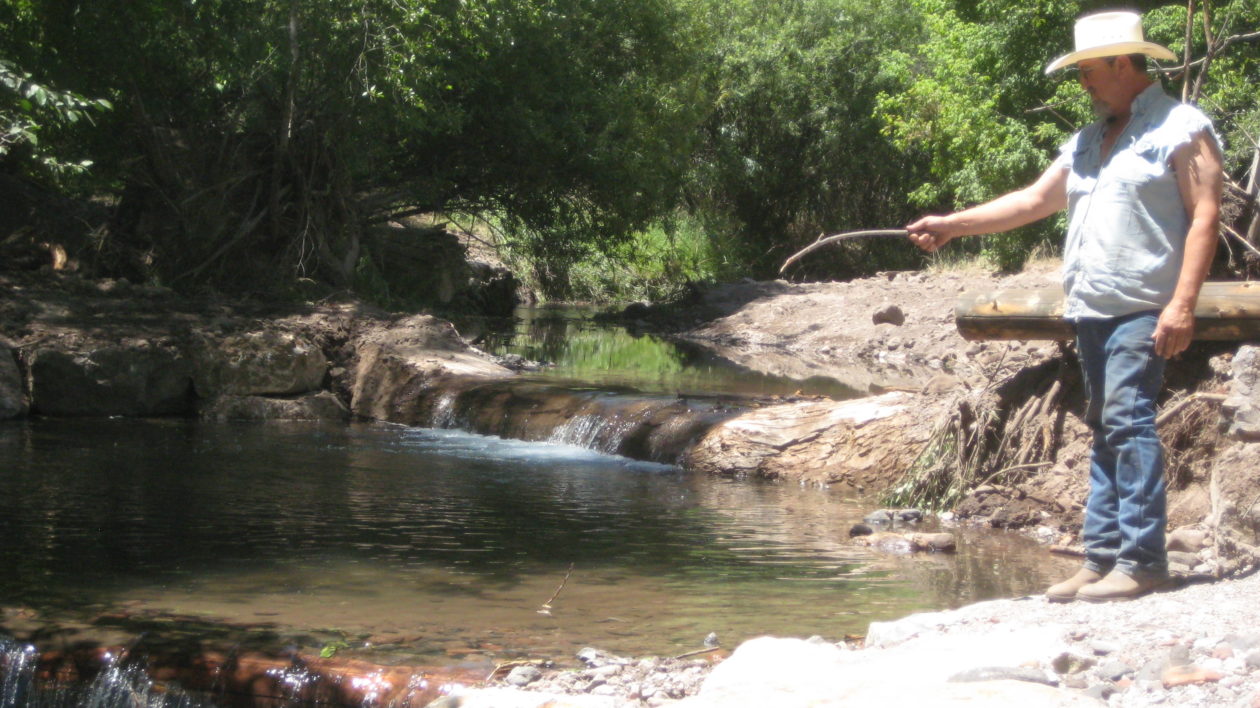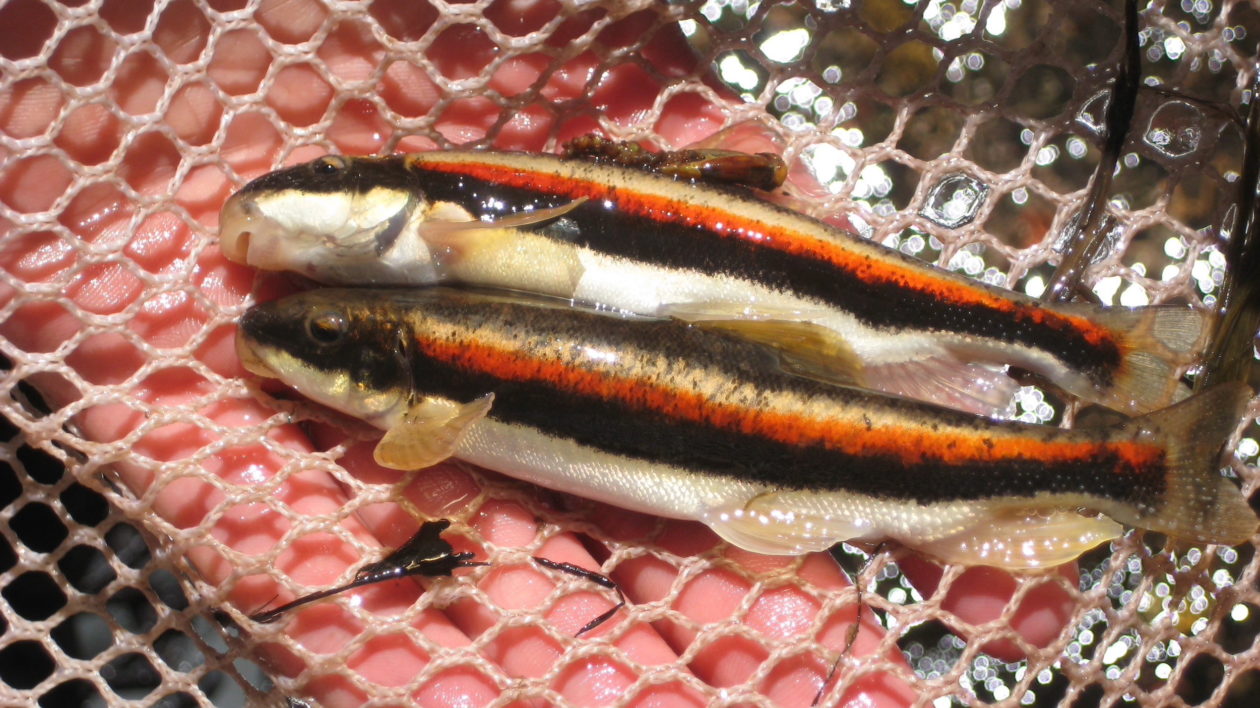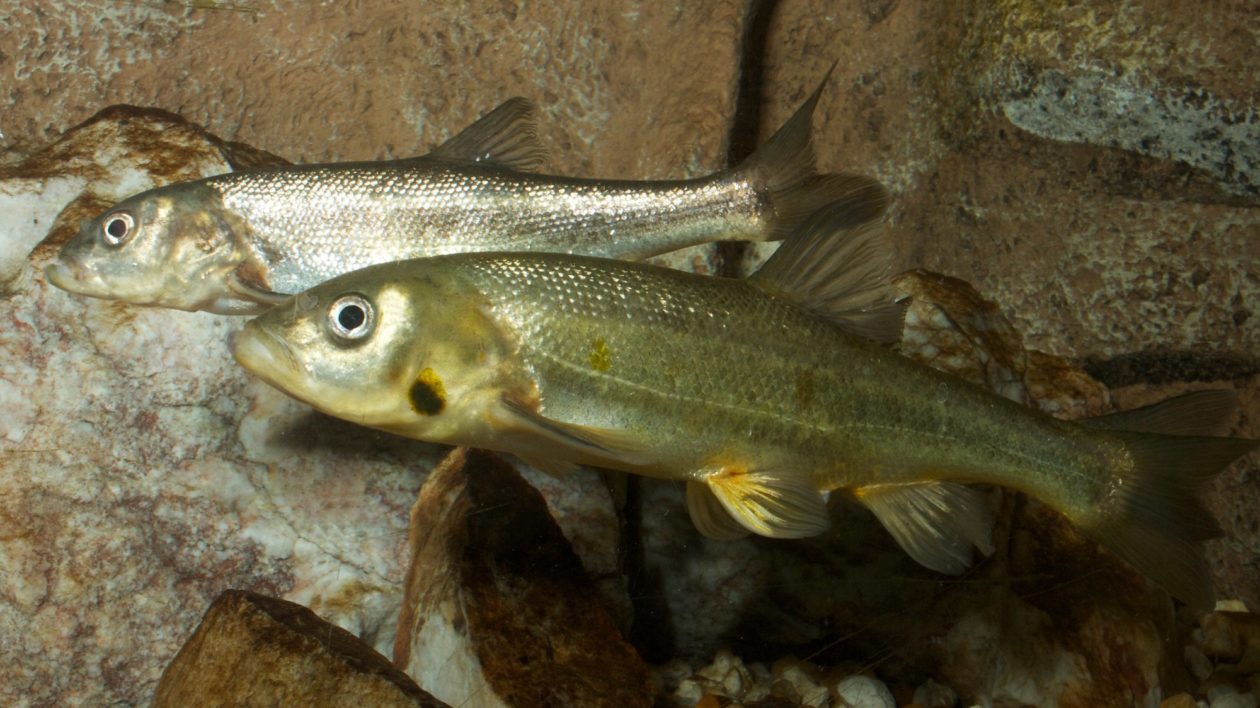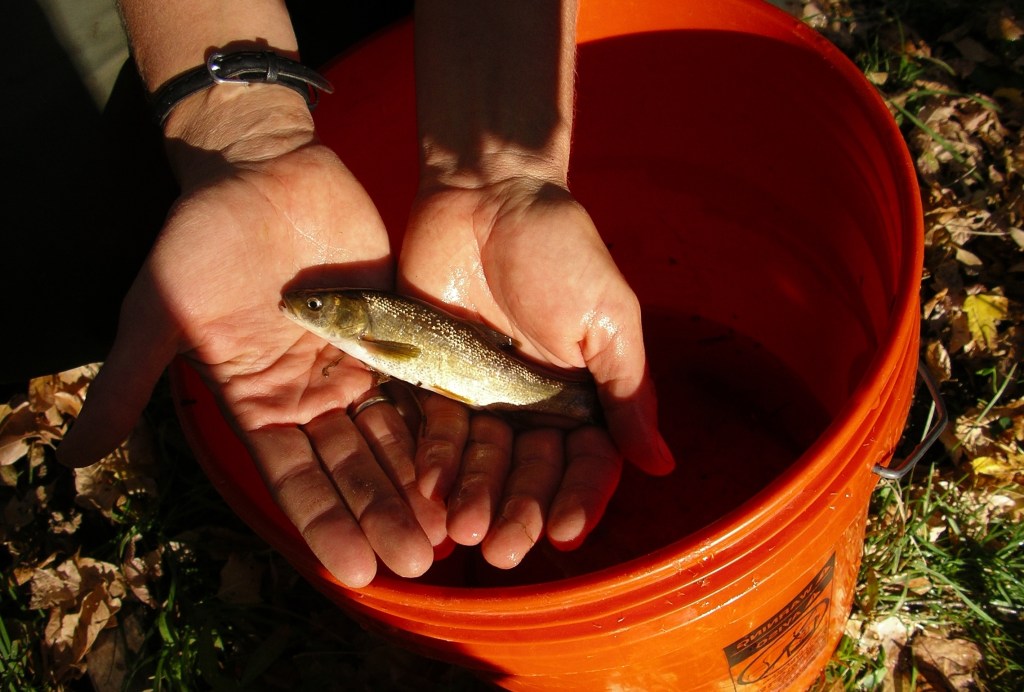This is the story of the Chihuahua chub (Gila nigrescens). It was believed extinct, last seen in 1851, until a local school teacher, working for the New Mexico Department of Game and Fish (NMDGF) during the summer, caught one in 1975. I met this gentleman a few years ago at a local natural history conference. In my mind he was a legend; I should have asked him for his autograph. But he was just a regular down-to-earth older guy, still curious about the natural word.
But these chubs? Not regular. They are a Federally-listed threatened species and endemic to the Guzman Basin that stretches from southwest New Mexico not Chihuahua Mexico. The fish is treated as endangered by the State of New Mexico. The chub’s best and only remaining habitat is found in the 15 mile-long Mimbres River in Southwest New Mexico. The Mimbres Valley is also home to The Nature Conservancy’s Mimbres River Preserve, which I steward.
Fish Survey
I work hard to incorporate a little bit of outdoor fun into my desk job, so recently I found myself out with the NMDGF crew surveying fish in the Mimbres River. This happens every fall, sweeping the river by electro-shocking and seining, gathering fish to measure and weight, and noting the incidental endangered Chiricahua leopard frog.
Joining these annual surveys is a pretty great way to meet fish, to snatch them up deftly with dip nets, to deposit them in buckets, to sit and measure and weigh them, to photograph golden, shimmery, pale- pink large chub. A bit about the color: NMGDF describes them as “dusky brown to brassy green on top and white on the belly.” While I just don’t see the green, I agree that their tender bellies are white.

We also record other fish we catch. I love the ones with red racer stripes (Rio Grande sucker Catostomus plebeius). The other fish we caught is longfin dace (Agosia chrysogaster), which I think of as the robin of the fish community: common and widespread in the Gila and Mimbres watersheds. This is how I have come to know the fish in the Mimbres River over the last 15 years.
This fall, sampling happened a few weeks later in October than usual. The day was still golden warm, a still, sweet, sun-warmed NM day with a big blue sky. We had an unusually large sampling crew this year, so I thought sampling would go fairly quickly. It didn’t, because we kept having equipment failures (the very expensive shocker is ready to retire or get fixed). With functional equipment, we would have been done in record time: we caught hardly any fish this year. Inexplicably. And perhaps cause for distress.
But before freaking out, imagining that something catastrophic has happened to the chub, it’s helpful to take the long view, to consider the context, to look at the trajectory of this population in the Mimbres River over time.

A Future for Chubs
Every year, I love to show up for these sampling days, taking photographs of really big chub pulled out of deep undercut banks, and silently feeling proud that The Nature Conservancy has such fantastic chub habitat. That didn’t happen this year: no big fish, few small fish, no gloating over our amazing habitat.
In 2017 NM Game and fish worked really hard to improve chub habitat, spending $1M on their property and $1M on our Mimbres Preserve to make pools and bury logs in the bank, increasing the deep holes in undercut banks, favored habitat for chub. Part of this project involved catching and moving as many fish as possible from the reach where heavy equipment would be working. It also meant surveying them once a month for several months in a row as part of a monitoring requirement.
We’ve been learning a lot about these chubs. In recent years, all the fish brought to the river from the Fish & Wildlife Service fish hatchery in Dexter, NM have been pit-tagged. This means they all have little social security numbers buried in their bellies.
Now when we catch fish that aren’t wearing their government-authorized pit tag number, they get tagged too. From reading the pit tags and looking at the data, we know that chubs move up and down the Mimbres River Valley way more than fish biologists thought possible.
This is especially impressive since the Mimbres River is repeatedly and entirely diverted out of the river channel into irrigation ditches throughout the 20-mile-long valley, leaving numerous long, dry reach reaches. But we also know they are reproducing really well: small untagged fish are frequently caught.
The other thing we know from the past five years is that the habitat work seems to have really helped chub: we’ve been catching more fish of all sizes these past years. Of course there’s the caveat that it’s a small sample size, just a few years, and not statistically significant. Nonetheless, we’ve celebrated all the fish we’ve caught, happy when we see the population trend line going upward.
One member of this falls sampling crew, a New Mexico State University student Giulio Del Piccolo, will be looking for chub up and down the river for his master’s thesis, doing an old-fashioned ‘life history’ study of the sort that is becoming less fashionable to fund, but remains the most fun kind of science to do.
He will also be building a population ‘model’ – which will likely be less fun but will likely help us understand population dynamics of the chub and increase his job skills.

/ Flickr
Where are the Fish?
So why did we catch so few fish this year? It’s entirely possible that because we sampled later in the season, we caught fewer fish, said biologist Bryan Ferguson with NMDGF. During the monthly surveys, the number of fish caught each month of the year was highly variable.
In addition, the habitat in the fixed fall monitoring stretch isn’t that great compared to what is up and downstream after the $2 million improvements.
I found this news comforting. Funny to find some comfort in science, in data. But I also soothed my distress with a dose of hope, also supported by evidence and history: these are scrappy fish, surviving fire and flood and drought. We’ll be back next year.




Join the Discussion